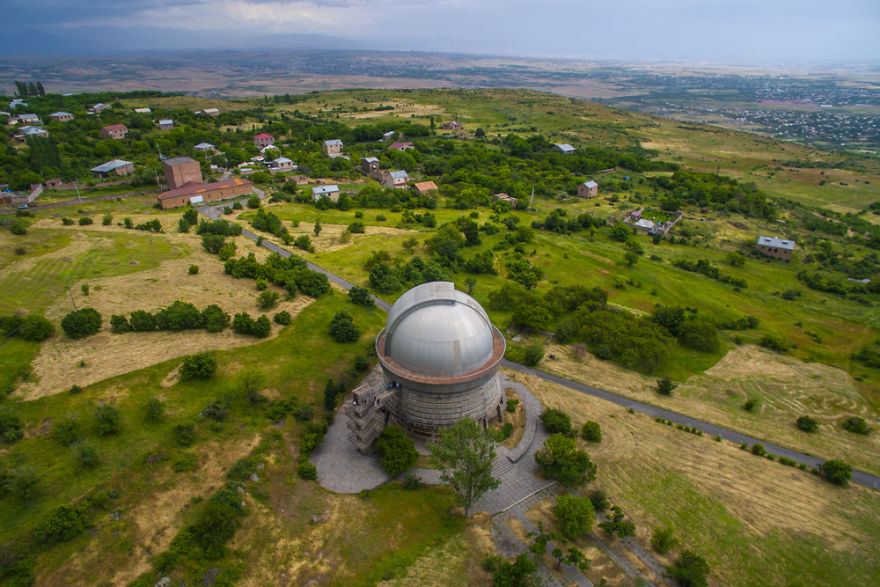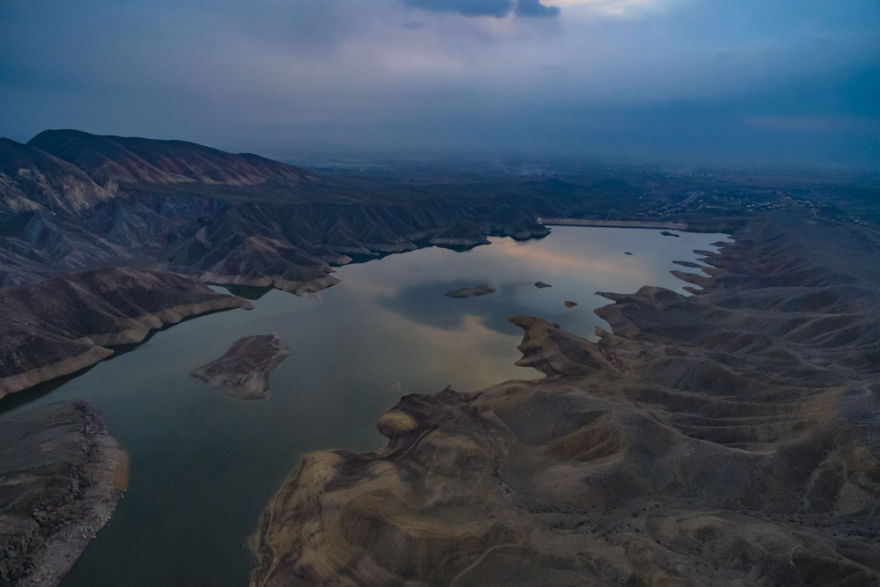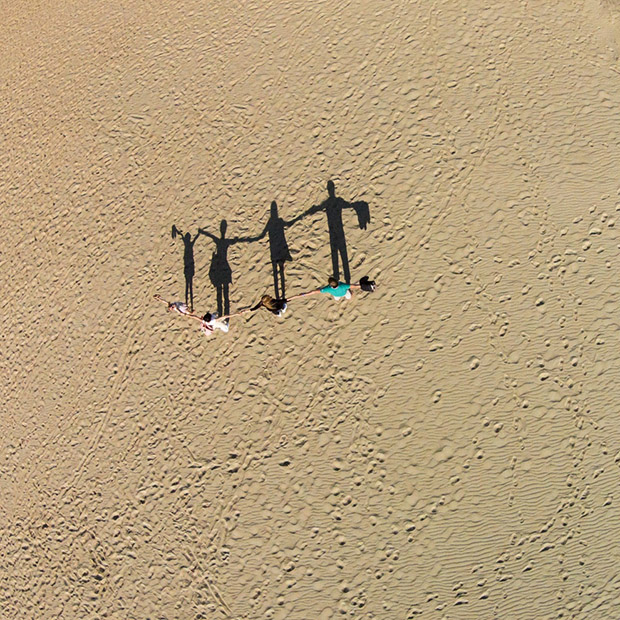Wiltshire Releases Drone Video of Wiltshire to Attract Visitors
Drone 100 Night at Sydney
A Beginner's Guide To Drone Photography
First time navigating the world of drone photography? 500px has a great article on everything you need to know about getting started with drones. All about the techniques and tips for your first few shoots with a drone. Read on, and get inspired to take your aerial photos to new heights!
"Surrounded" - Drone Shot
"Surrounded" - drone shot from the Peak District.
What’s Next for the U.S. Drone
Following a major milestone for the domestic drone industry last week, industry insiders are expecting a big uptick in dollars invested in U.S. drone-tech companies — just maybe not an immediate one.
As we previously reported, the U.S. Department of Transportation and the Federal Aviation Administration implemented Part 107, or Small Unmanned Aircraft Systems rules, bringing some eagerly awaited clarity to the industry.
The regulations don’t allow for commercial use of drones at night, flying of drones over people or flying of drones beyond the visual line of sight. Companies still have to seek ad hoc exemptions from federal authorities to do these things for business purposes.
Depending on how quickly the DOT, FAA and other relevant offices can evaluate exemption requests and grant them, the Part 107 rule could actually slow the roll out of anything like drone delivery services, or pervasive use of drones for news gathering, surveillance or inspections in populated areas and at night.
Global UAS Practice co-chair at the D.C. law firm Hogan Lovells, Lisa Ellman, also a co-executive director of the Commercial Drone Alliance, said:
“Of course, Silicon Valley is operating at lightning speed and D.C. is operating at the pace of bureaucracy… But it’s understandable in ways because the FAA, DOT and others need more information before they can draft regulations.”
In this next cycle, she said, she wants to see drone tech and service providers step up and provide all the data they can to regulators, but also to the public, so that people can learn more about the potential benefits of drones.
Ellman believes that even the Part 107 rules as they stand today will help open the doors for more innovation and investments in the field, especially around drone-tech education and safety-related technologies.
Menlo Ventures’ Managing Director Venky Ganesan, an investor in Flirtey, the delivery drone-tech venture, and DeDrone, a maker of drone detection systems, agreed. “With clarification about the rules of the game, investments flourish in any industry. Once people know what the rules are they can decide how to play it.”
Ganesan expects investment in vertical, or industry-specialized drone-tech startups and drone services, to ramp up directly as a result of Part 107.
“Nobody wakes up and says I want to use drones at work. They want to solve business problems and know what’s going on around a farm or their pipelines. Drones can help them do that, but many will rely on service providers and specialists for this,” the investor said.
Longer term, he expects a larger capital outlay to flow to drone-tech companies after regulators allow beyond the line of sight flying of drones, using autonomous flight, collision avoidance and other remote piloting systems.
Those who are not already evaluating drone-tech deals, Ganesan believes, may have seriously underestimated the long-term impact of the technology.
An old Silicon Valley chestnut states that short-term effects of major new technologies are generally overestimated, but long-run effects are underestimated.
Subtraction Capital General Partner Paul Willard, who previously worked at Boeing as an aerodynamics engineer, said, “Setting a high bar that companies know how to clear” is the most important thing that regulators can do to ensure the U.S. is a leader in the drones industry.
“There’s still need for a lot more clarity before U.S. markets are at the fore. But plenty of companies are getting funding now and off to the races, even if that’s somewhere not in the U.S.,” Willard noted. Subtraction Capital is an investor in Zipline, which is launching a medical delivery drone service in Rwanda.
He also compared the drone-tech market to that for medical devices and pharmaceuticals.
Medical devices and new drugs are often launched and studied beyond the U.S. before the companies making them raise large venture or private equity rounds to come into compliance with strict U.S. regulations.
Several other startup founders and drone-tech investors have shared worries with TechCrunch that commercial drone regulation requiring tech companies to seek out variances could inadvertently benefit winners and create barriers to competition for others who do not get federal exemptions, or do not get them as quickly as others.
From techcrunch
Extremely Rare White Whale Calf Filmed by Drone
Drone footage captures images of an extremely rare white southern right whale calf swimming with its mother off the coast of Western Australia.
3D Mapping by Drone
Drone Deploy’s beta structural 3D mapping software with the DJI Phantom 3 is amazing, and we can do it for you!
The View From Above Contest
we are looking for breathtaking photos that capture the world from above. This could include photos taken by drones, aerials taken from up high, or even photos that capture amazing people, places or things in detail that exist below you and your camera. Think outside the box and take the photo as close up or far away from your subject as you want (so long as seen from above)!
Stunning Photos of Armenia Captured by a Drone












Uluru Drone Footage Reveals Never-before-seen Views
The 550m-year-old Australian sandstone monolith can be seen from a new perspective captured by the first drone to operate under permit inside Uluru-Kata Tjuta national park.
WRC Looks Better Than Ever
The footage drones produce can be beautiful. Being able to fly on a completely different parallax, easily adjusting height and speed, all gives an intensely visually stimulating image. So when this is paired with chasing a mud-slinging rally car, drones give depth and a rawness that a man in the helicopter or the muddy guy with the tripod just can’t.
See more at Top Gear
The Top Panoramic Photos Taken With Drones
The pieces featured in SkyPixel’s contest show that there’s opportunity for 360-degree photography to enable new types of art. As 360-degree cameras and drones become cheaper and more accessible, we’re bound to see more similar creations emerge. Explore the winning shots below by moving your mouse cursor or finger around the image.
Drone Shows Incredible Extent of Flooding in Louisiana
Catastrophic flooding hit southern Louisiana this weekend, displacing thousands of residents and killing at least six people.
Drone footage of flooding near Interstate 12 in Hammond, Louisiana, posted to YouTube on Saturday shows rainwater affecting entire neighborhoods, partially submerging cars, trucks and houses.
Navigating the FAA’s New Drone Rule for Realtors
Real estate professionals hoping to use drones in their business got some big news when the Federal Aviation Administration released a final rule governing the commercial use of small unmanned aircraft systems. This final rule, effective August 29, 2016, includes some hard-fought wins for the National Association of REALTORS®, and a clearer path for people to put drones to use in their businesses.
The new rule will no longer require a small unmanned aircraft operator to hold a FAA-issued pilot’s license. Instead, the final rule requires a person operating a small uas to either hold a remote pilot certificate with a small uas rating or be under the direct supervision of someone who does. This new remote pilot certificate will be less expensive and less time-consuming to obtain – a major victory for aspiring drone users.. In general, small UAS may only be flown during the daytime, and cannot be flown over non-participants, and the small UAS must be within the visual line of sight of the operator at all times.
To learn more about the rule, and the significant changes for Realtors
Stunning Look of Indiana Tornado by Drone
Drone catches the large funnel cloud as it travels across some farmland.
Drone Journey Into One of World’s Largest Caves
Equipped with a drone and camera gear, photographer Ryan Deboodt spent eight days camped inside Vietnam's Son Doong Cave and captured amazing footage. Some of the massive caverns in Son Doong, one of the world's largest caves, are almost 500 feet (150 meters) wide and 650 feet (200 meters) high, large enough to accommodate a Boeing 747.
Amazing Travel Videos by Drone
Stunning AW'16 Campaign
The beautiful AW16 Craig Green campaign was shot with a drone in a black sand beach featuring images of models wearing the new collection that incorporates ideas of protection and romance. He drew inspiration from the pages of National Geographic.
The World by Drone
It’s videos like this that inspire me to fly more and capture the beauty in this world. I myself haven’t done much traveling, but there are a lot of awesome places out there to see. Karim Iliya captured a lot of amazing content out in Pachamama and put together this video in a very fun and entertaining way.























